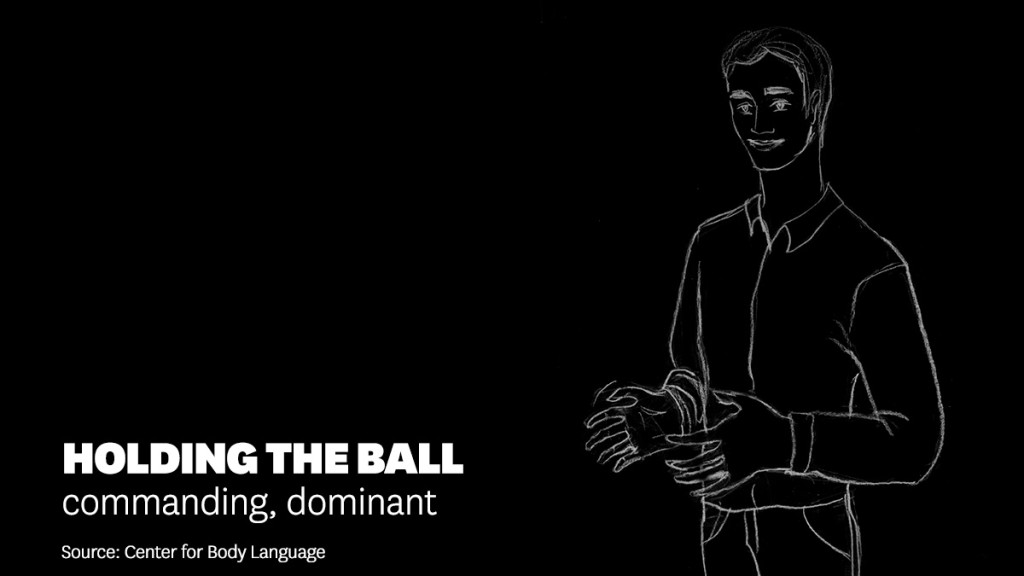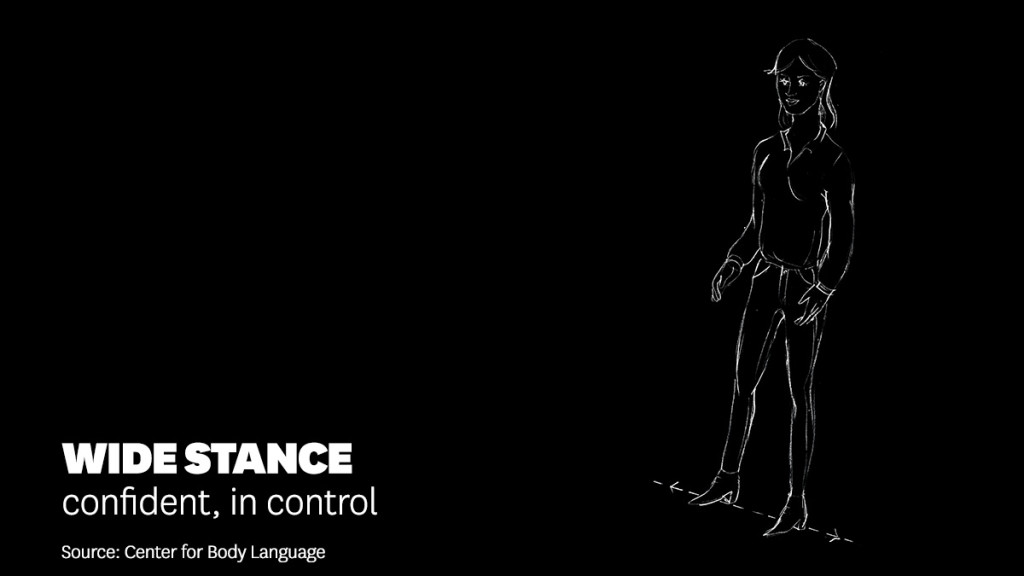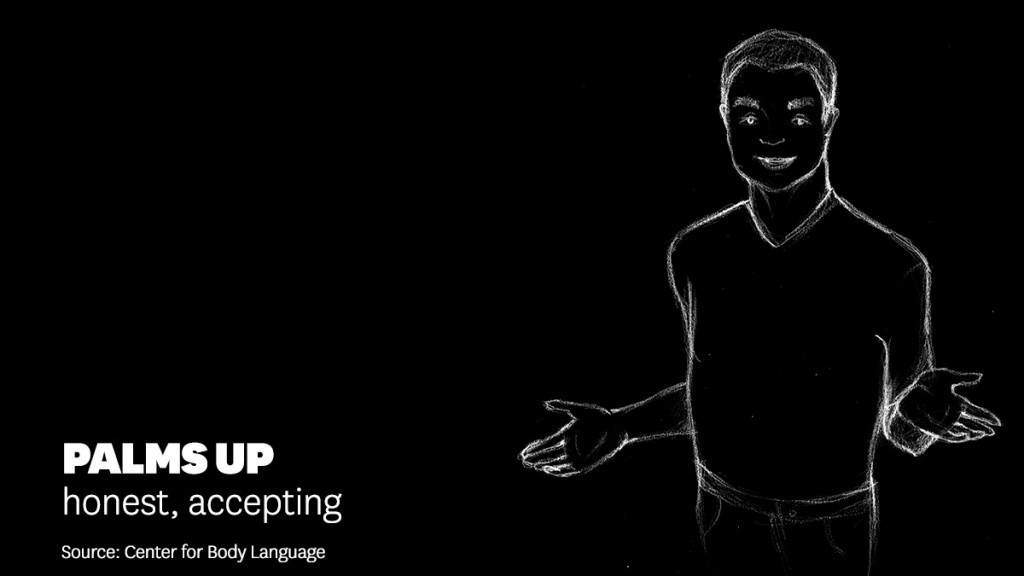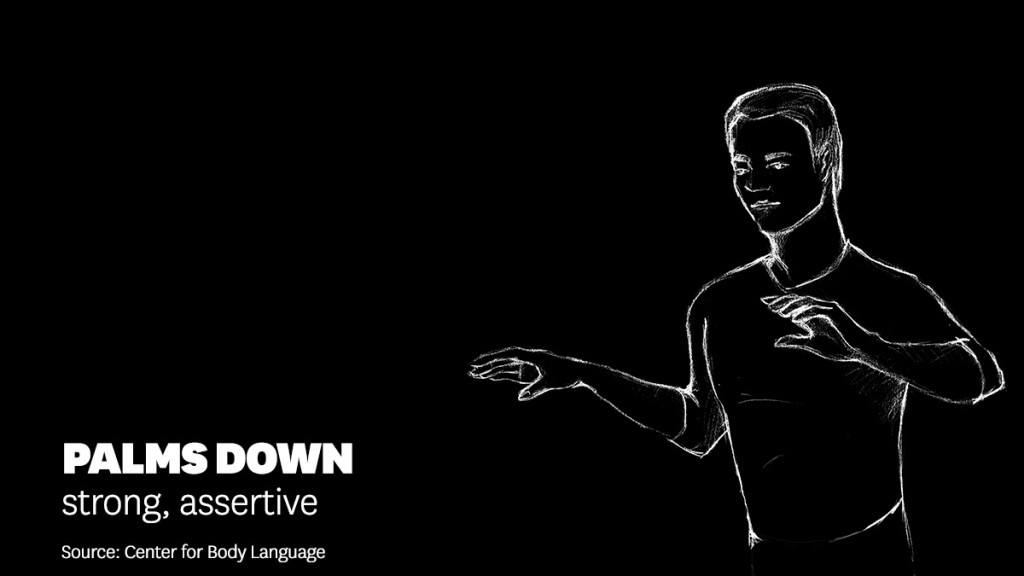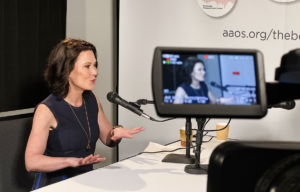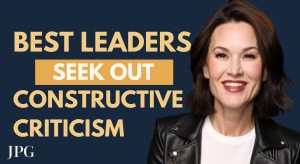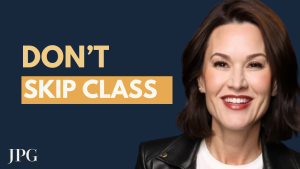Some people talk with their hands.
Some people talk with their hands a little too much.
They’re in the middle of a room – yet, it’s like they’re waving down a plane. Distracting? Yes.
Have you ever been in an audience or watched someone online and found yourself watching them act like they’re conducting an orchestra? And you don’t remember a word they said?
What you’re DOING with your face, hands and the rest of your body can either ADD or DETRACT from your message. They may not hear a word you’re saying because of what your body’s doing.
You may have no idea you even have this issue. Most people won’t tell you. We’re all too nice. ESPECIALLY if you’re the boss.
Your non-verbal communication will contribute (or is contributing right now) to your success or failure.
Kasia Wezowski is the founder of the Center for Body Language and the author of four books on the subject. She recently wrote about this for the Harvard Business Review.
In the article, she specifically broke down body language from the 2012 U.S. Presidential election. The Center for Body Language conducted an online survey with 1,000 participants.
“… both Democrats and Republicans—watched two-minute video clips featuring Barack Obama and Mitt Romney at campaign events delivering both neutral and emotional content. Webcams recorded the viewers’ facial expressions, and our team analyzed them for six key emotions identified in psychology research: happy, surprised, afraid, disgusted, angry, and sad. We coded for the tenor of the emotion (positive or negative) and how strongly it seem to be expressed. This analysis showed that Obama sparked stronger emotional responses and fewer negative ones. Even a significant number of Republicans—16%— reacted negatively to Romney. And when we analyzed the candidates’ body language, we found that the President displayed primarily open, positive, confident positions congruent with his speech. Romney, by contrast, often gave out negative signals, diminishing his message with contradictory and distracting facial expressions and movement.”
Are you sending out positive and open signals? Or are you sending out negative and distracting signals?
Let’s take a look.
The Center for Body Language studied successful leaders across a range of fields and identified several positions which indicate effective, persuasive body language.
Here are its findings:
“Early in Bill Clinton’s political career he would punctuate his speeches with big, wide gestures that made him appear untrustworthy. To help him keep his body language under control, his advisors taught him to imagine a box in front of his chest and belly and contain his hand movements within it. Since then, “the Clinton box” has become a popular term in the field.”
Holding the ball
“Gesturing as if you were holding a basketball between your hands is an indicator of confidence and control, as if you almost literally have the facts at your fingertips hands. Steve Jobs frequently used this position in his speeches.”
Wide stance
“How people stand is a strong indicator of their mindset. When you stand in this strong and steady position, with your feet about a shoulder width apart, it signals that you feel in control.”
Palms up
“This gesture indicates openness and honesty. Oprah makes strong use of this during her speeches. She is a powerful, influential figure, but also appears willing to connect sincerely with the people she is speaking to, be it one person or a crowd of thousands.”
Palms down
“The opposite movement can be viewed positively too—as a sign of strength, authority and assertiveness. Barack Obama has often used it to calm a crowd right after moments of rousing oration.”
This is why I record my clients on video. Sometimes they have no idea what they look like while they’re talking until they see what I shoot. It’s much easier to fix issues when you’re aware of them.
Try shooting video of yourself. How did you stand? How did you use your hands?
Positive body language could definitely help you become a more effective leader.
Would you like help? Please click here for a free strategy session on the phone or on Skype (so I can check out your body language).



